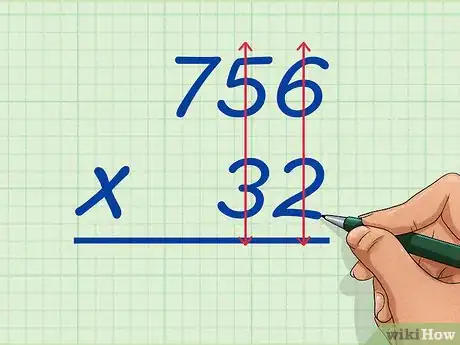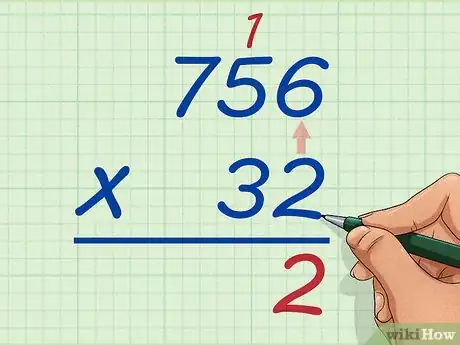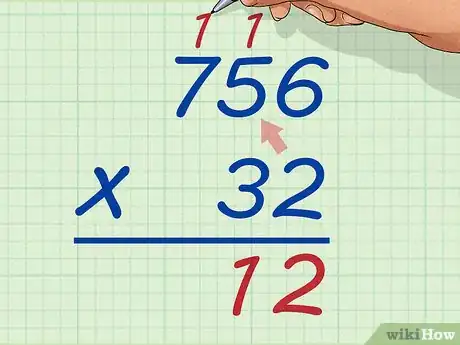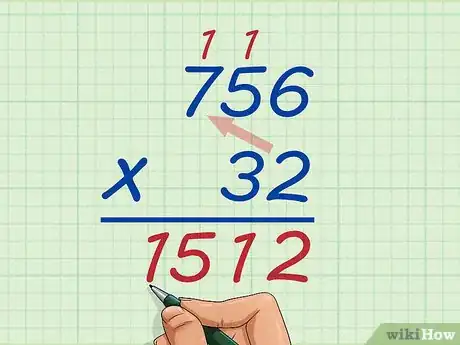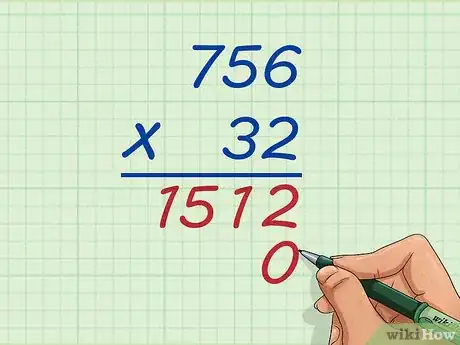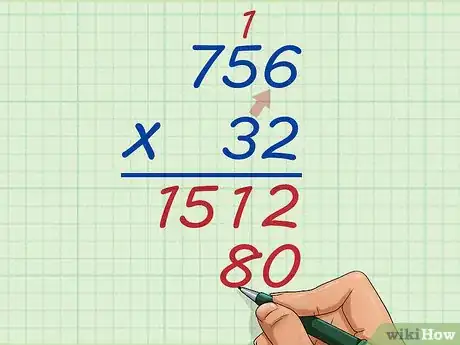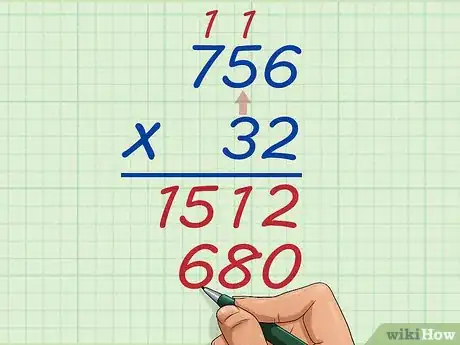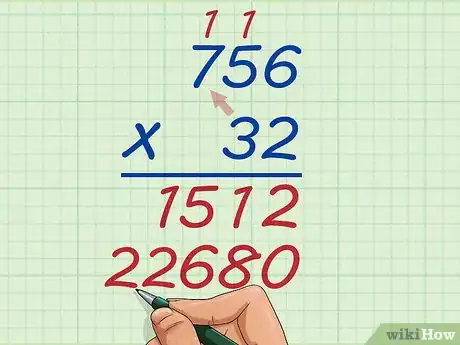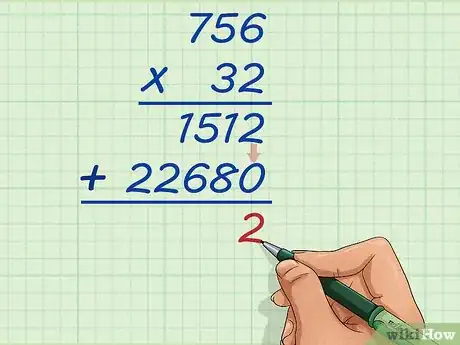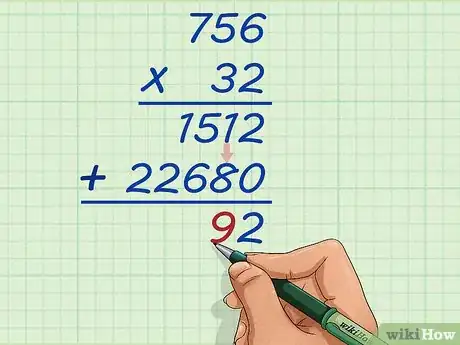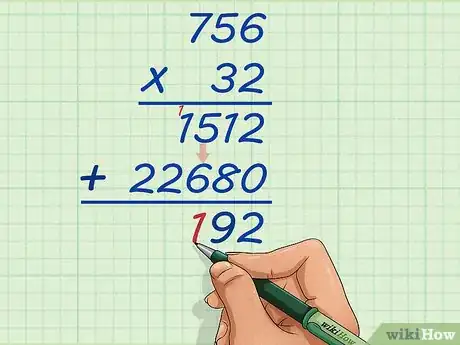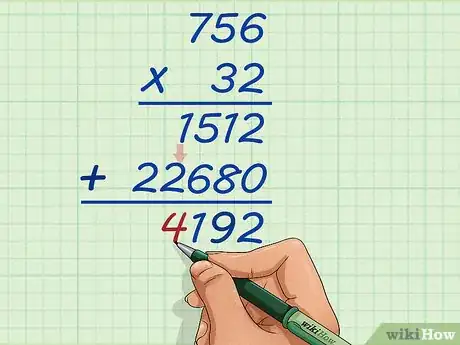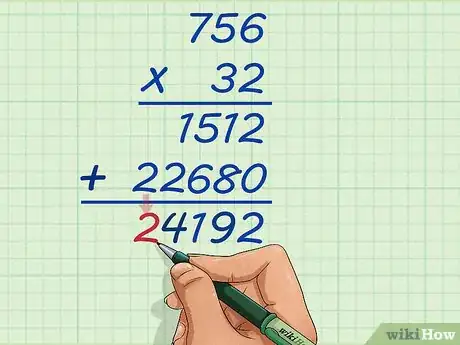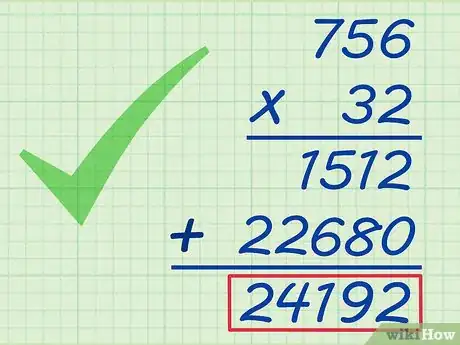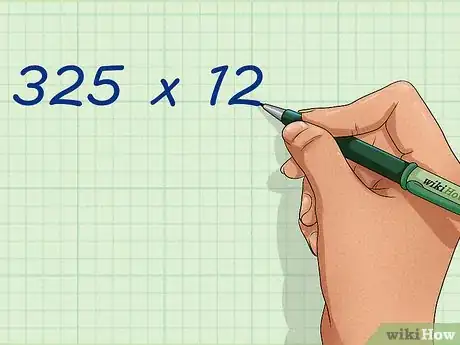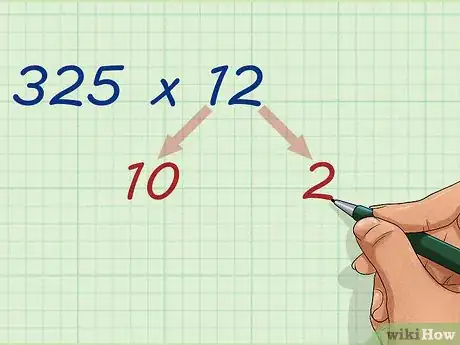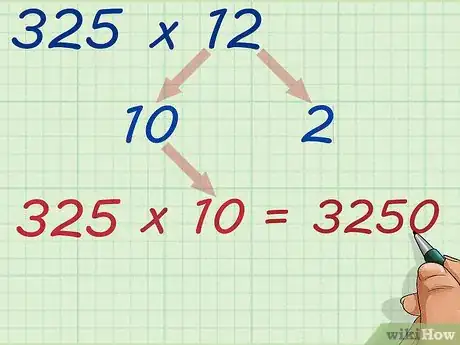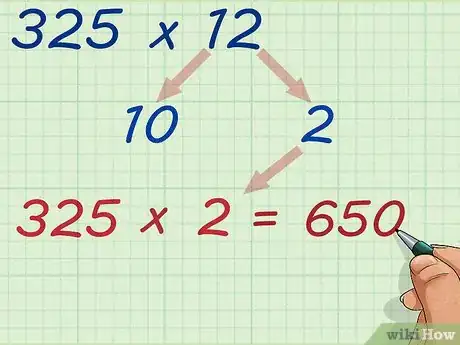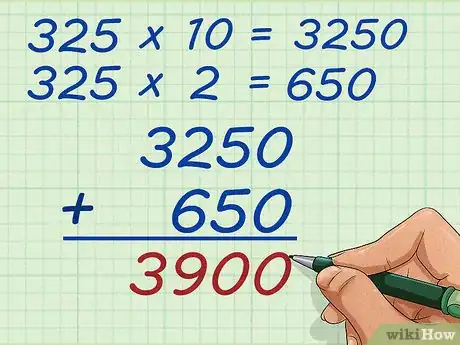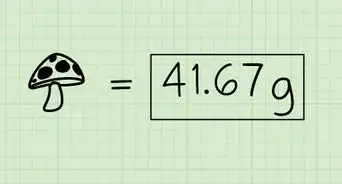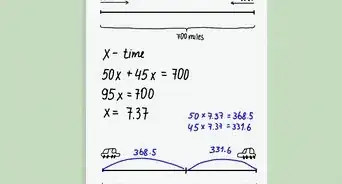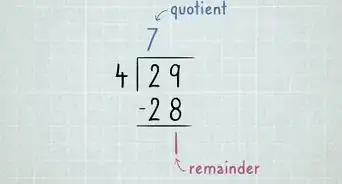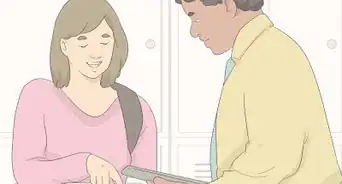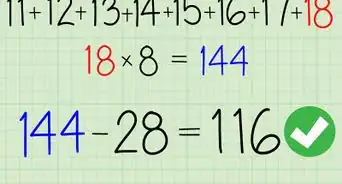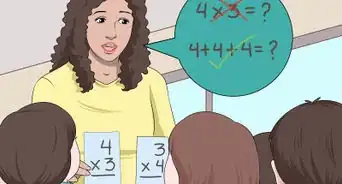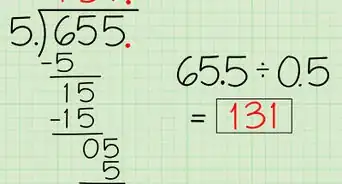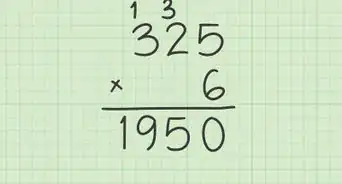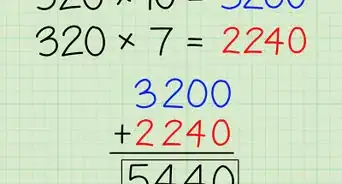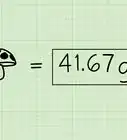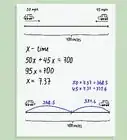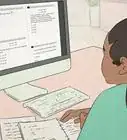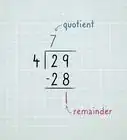wikiHow is a “wiki,” similar to Wikipedia, which means that many of our articles are co-written by multiple authors. To create this article, 128 people, some anonymous, worked to edit and improve it over time.
There are 8 references cited in this article, which can be found at the bottom of the page.
This article has been viewed 2,150,231 times.
Learn more...
Long multiplication can seem very intimidating, especially if you're multiplying two numbers that are pretty large. If you take it step by step, though, you'll be able to do long multiplication in no time. Get ready to ace those math quizzes by going to Step 1 below to get started.
Steps
Doing Standard Long Multiplication
-
1Write the larger number above the smaller number. Let's say you're going to multiply 756 and 32. Write 756 above 32, making sure that the ones and tens columns of both numbers line up, so that the 6 from 756 is above the 2 in 32 and the 5 in 756 is above the 3 in 32, and so on. This will make it easier for you to visualize the long multiplication process.[1]
- You will essentially begin by multiplying the 2 in 32 by each of the numbers in 756, and then multiplying the 3 in 32 by each of the numbers in 756. But let's not get ahead of ourselves.
- The "bigger" number means the one with the most digits (numbers).
-
2Multiply the number in the ones place of the bottom number by the number in the ones place of the top number. Take the 2 from 32 and multiply it by the 6 in 756. The product of 6 times 2 is 12. Write the ones digit, 2, under the units, and carry the 1 over the 5. Basically, you write down whatever number is in the ones digit, and if there is a number in the tens digit, you will have to carry it over the number to the left of the top number you just multiplied. You'll have a 2 directly below the 6 and the 2.[2]Advertisement
-
3Multiply the number in the ones place of the bottom number by the number in the tens place of the top number. Now, multiply 2 times 5 to equal 10. Add the 1 you carried over above the 5 to 10 to equal 11, and then write a 1 next to the 2 in the bottom row. You'll have to carry the extra 1 in the tens place over the 7.[3]
-
4Multiply the number in the ones place of the bottom number by the number in the hundreds place of the top number. Now, just multiply 2 by 7 to equal 14. Then add the 1 that you carried over to 14 to equal 15. Don't carry the tens over this time, as there are no more numbers to multiply on this row. Just write the 15 on the bottom line.[4]
-
5Draw a 0 in the ones column below the first product. Now, you'll be multiplying the number in the tens place of 32, 3, by each digit in 756, so draw a zero below the 2 in 1512 before you begin so you are already starting in the tens place. If you were going to keep going and multiply a number in the hundreds place by the top number, then you'd need to draw two zeroes, and so on.[5]
-
6Multiply the number in the tens place of the bottom number by the number in ones place of the top number. Now, multiply 3 by 6 to equal 18. Again, put the 8 on the line, and carry the 1 over above the 5.
-
7Multiply the number in the tens place of the bottom number by the number in tens place of the top number. Multiply 3 times 5. This makes 15, but you must add on the carried 1, so it equals 16. Write the 6 on the line, and carry the 1 over above the 7.
-
8Multiply the number in the tens place of the bottom number by the number in hundreds place of the top number. Multiply 3 times 7 to equal 21. Add the 1 you carried to equal 22. You don't need to carry the 2 in 22, as there are no more numbers to multiply on this line, so you can just write it down next to the 6.
-
9Add the ones digits of both products. Now, you'll have to simply add up 1512 and 22680. First, add 2 plus 0 to equal 2. Write the result in the ones column.
-
10Add the tens digits of both products. Now, add up 1 and 8 to equal 9. Write 9 to the left of the 2.
-
11Add the hundreds digits of both products. The sum of 5 and 6 is 11. Write down the 1 in the ones place and carry the 1 in the tens place over 1 at the very left of the first product.
-
12Add the thousands digits of both numbers. Add up 1 plus 2 to equal 3 and then add on the 1 you carried over to equal 4. Write it down.
-
13Add the ten thousands digits of both numbers. The first number has nothing in the ten thousands place, and the second has 2 there. So, add 0 plus 2 to equal 2 and write it down. This gives you 24,192, your final answer.
-
14Check your answer with a calculator. If you want to double check your work, type in the problem into a calculator to see if you've done it correctly. You should get 756 times 32 equals 24,192. You're all done!
Taking a Shortcut
-
1Write down the problem. Let's say you're multiplying 325 times 12. Write it down. One number should be right next to the other, not below it.[6]
-
2Split up the smaller number into tens and ones. Keep 325 and split up 12 into 10 and 2. The 1 is in the tens digit, so you should add a 0 afterward to keep its place, and since the 2 is in the ones place, you can just write down 2.[7]
-
3Multiply the larger number by the number in the tens digit. Now, multiply 325 times 10. All you have to do is add a zero to the end to equal 3250.[8]
-
4Multiply the larger number by the number in the ones digit. Now, just multiply 325 by 2. You can eyeball it and see that the answer is 650, since 300 times 2 is 600 and 25 times 2 is 50. Add up 600 and 50 to equal 650.
-
5Add up the two products. Now, just add up 3250 and 650. You can do this using the good old fashioned addition method. Just write 3250 over 650 and do all the work. You'll get 3,900. Really, this is similar to doing the standard long multiplication, but splitting up a number into ones and tens allows you to do a bit more of the math in your head and to avoid multiplying and carrying too much. Either method will yield the same results, and it all depends on which one works more quickly for you.
Practice Problems and Answers
Community Q&A
-
QuestionWhat can I do if I am confused by all of the zeroes on the end of the numbers?
 John paul56Community AnswerSet aside first the zeros (but remember how many there are). Multiply the non-zero numbers, then add all the zeros that you set aside beforehand.
John paul56Community AnswerSet aside first the zeros (but remember how many there are). Multiply the non-zero numbers, then add all the zeros that you set aside beforehand. -
QuestionHow do I do the checking in a multiplication process?
 Community AnswerUse a calculator to check your answer, or if not possible, use long division to divide your answer by one of the numbers and see if you get the other number.
Community AnswerUse a calculator to check your answer, or if not possible, use long division to divide your answer by one of the numbers and see if you get the other number. -
QuestionHow can I solve money problems without using a calculator?
 Community AnswerMoney problems aren't too complicated, just do the problem like a normal one and put the decimal in front of the last two numbers.
Community AnswerMoney problems aren't too complicated, just do the problem like a normal one and put the decimal in front of the last two numbers.
References
- ↑ https://www.theschoolrun.com/what-is-long-multiplication
- ↑ https://www.ducksters.com/kidsmath/long_multiplication.php
- ↑ https://www.mathsisfun.com/numbers/multiplication-long.html
- ↑ http://mathworld.wolfram.com/LongMultiplication.html
- ↑ https://www.homeschoolmath.net/teaching/md/multiplication_algorithm.php
- ↑ https://www.businessinsider.com/common-core-multiplication-method-2014-6
- ↑ https://www.theschoolrun.com/what-is-the-grid-method
- ↑ https://mhorley.wordpress.com/2016/03/03/box-method-for-multiplication-why-do-we-teach-it/
About This Article
To do long multiplication quickly, start by splitting up the tens and ones place in the smaller number. For example, if the number was 12, you would end up with 10 and 2. Next, multiply the bigger number by both the tens number and the ones number. Finally, add the 2 products together to get your final answer. To learn how to write out a long multiplication problem by hand, keep reading!
